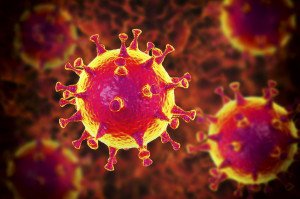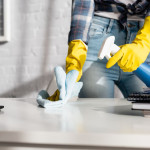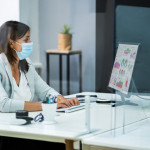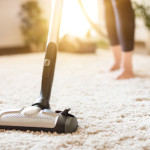Entertaining welcome houseguests can be exciting, especially over the holidays or during enjoyable family events. Houseguests give homeowners a chance to spruce up their spaces a bit, and provide a happy distraction from the routine of day-to-day life and responsibilities. When you know special company is coming, it’s a time to prepare, clean and organize. We work hard to make sure their stay is as comfortable as possible.
But what about the houseguests that aren’t exactly welcome, those visitors who simply show up uninvited? And what if those houseguests are making you sick? These are the very houseguests that you may not even know are bunking with you and your family. Why don’t you know they’re there? Becau se you can’t hear them, smell them, or even see them. This doesn’t stop them from invading every room of your home, or from staying as long as they’d like. Sounds unpleasant, doesn’t it? Welcome to the world of pathogens, a world that exists within your own four walls. While most pathogens are harmless, not all of them are benign, and you’ll encounter thousands upon thousands of them everyday — without even knowing it.
se you can’t hear them, smell them, or even see them. This doesn’t stop them from invading every room of your home, or from staying as long as they’d like. Sounds unpleasant, doesn’t it? Welcome to the world of pathogens, a world that exists within your own four walls. While most pathogens are harmless, not all of them are benign, and you’ll encounter thousands upon thousands of them everyday — without even knowing it.
A study conducted by NSF International (an independent public health organization) looked at the dirtiest areas of the common household, swabbing more than 30 locations in more than 20 homes. Which areas would you guess were home to the most disease-causing germs? Before testing the locations, volunteer homeowners were asked to place the following 10 items in order of what they thought contained the most germs:
- Toothbrush holder
- Dish rag/sponge
- Money
- Pet toys
- Countertops
- Bathroom door knob
- Kitchen sink
- Pet bowl
- Toilet handle
- Bathroom light switch
How does this list compare with the order you would have placed them in?
In reality, the top 10 dirtiest places in your home are those below, in order, according to the study’s findings through swabbing.
- Dish rag/sponge
- Kitchen sink
- Toothbrush holder
- Pet bowl
- Coffee reservoir
- Bathroom faucet handle
- Pet toys
- Countertops
- Stove knobs
- Cutting boards
The good news? These locations in your home don’t need to be a source of stress or sickness. The antimicrobial coating offered by MicroShield 360 is effective for up to an entire year when applied by a certified installer to common household surfaces. The coating itself is non-toxic and available for home application. Pathogens are unable to pass through the coating’s surface, keeping you and your loved ones safe from harmful substances that have overstayed their welcome. For the immunocompromised, this is especially important.
Reach out to MicroShield 360 today to learn more about saying “adios” to those unwanted houseguests once and for all!








